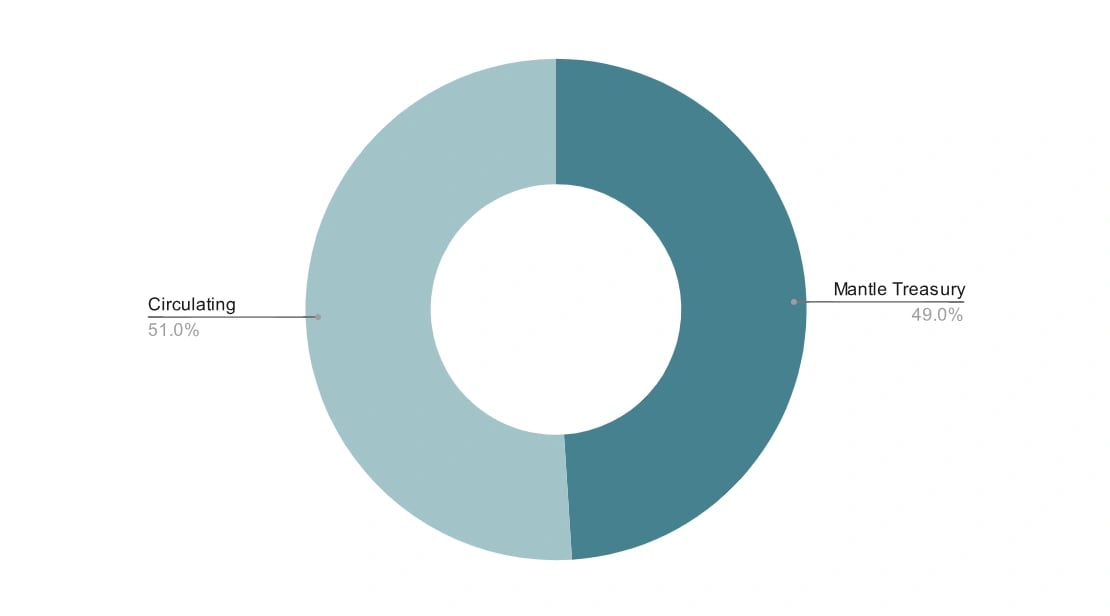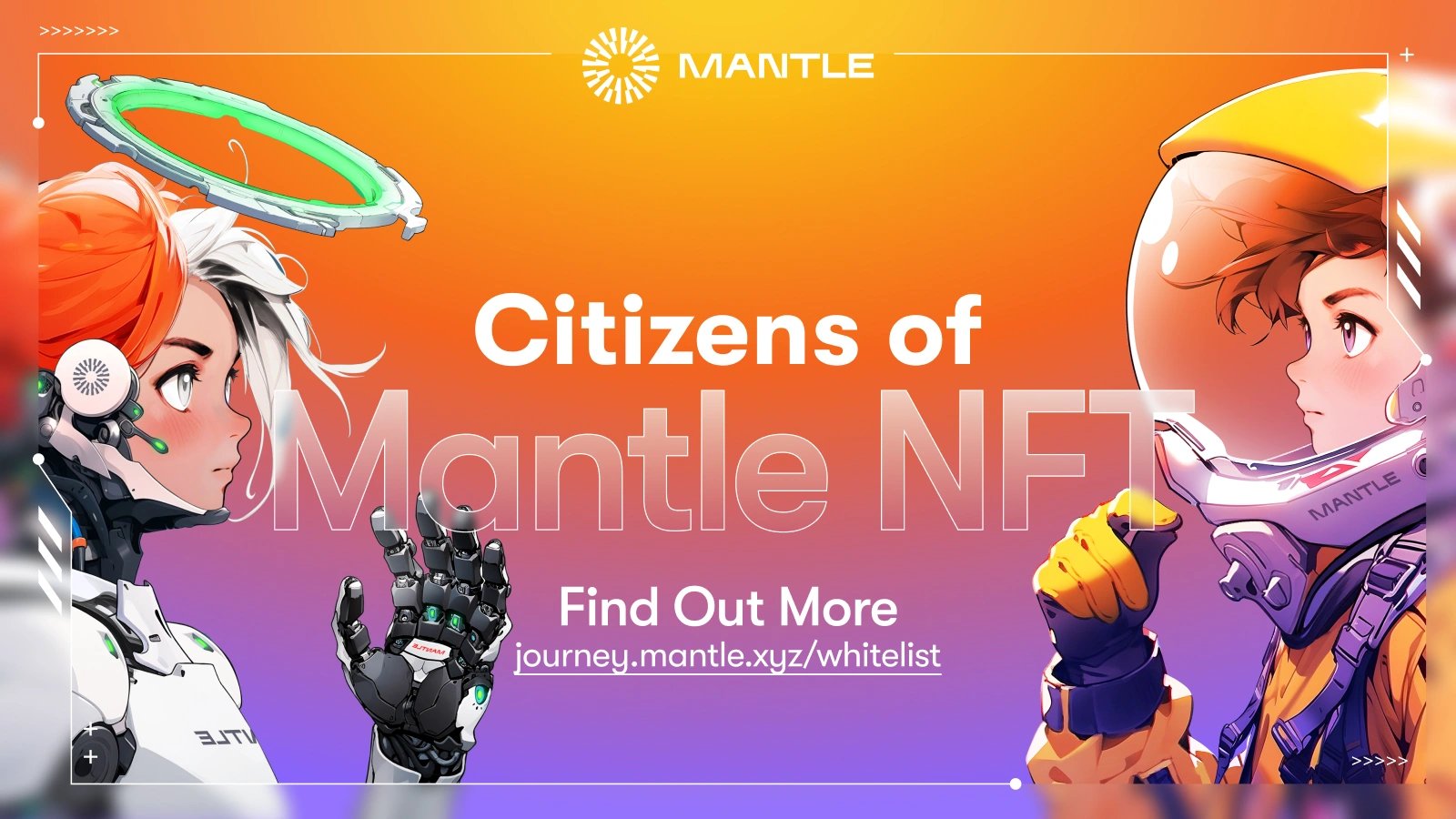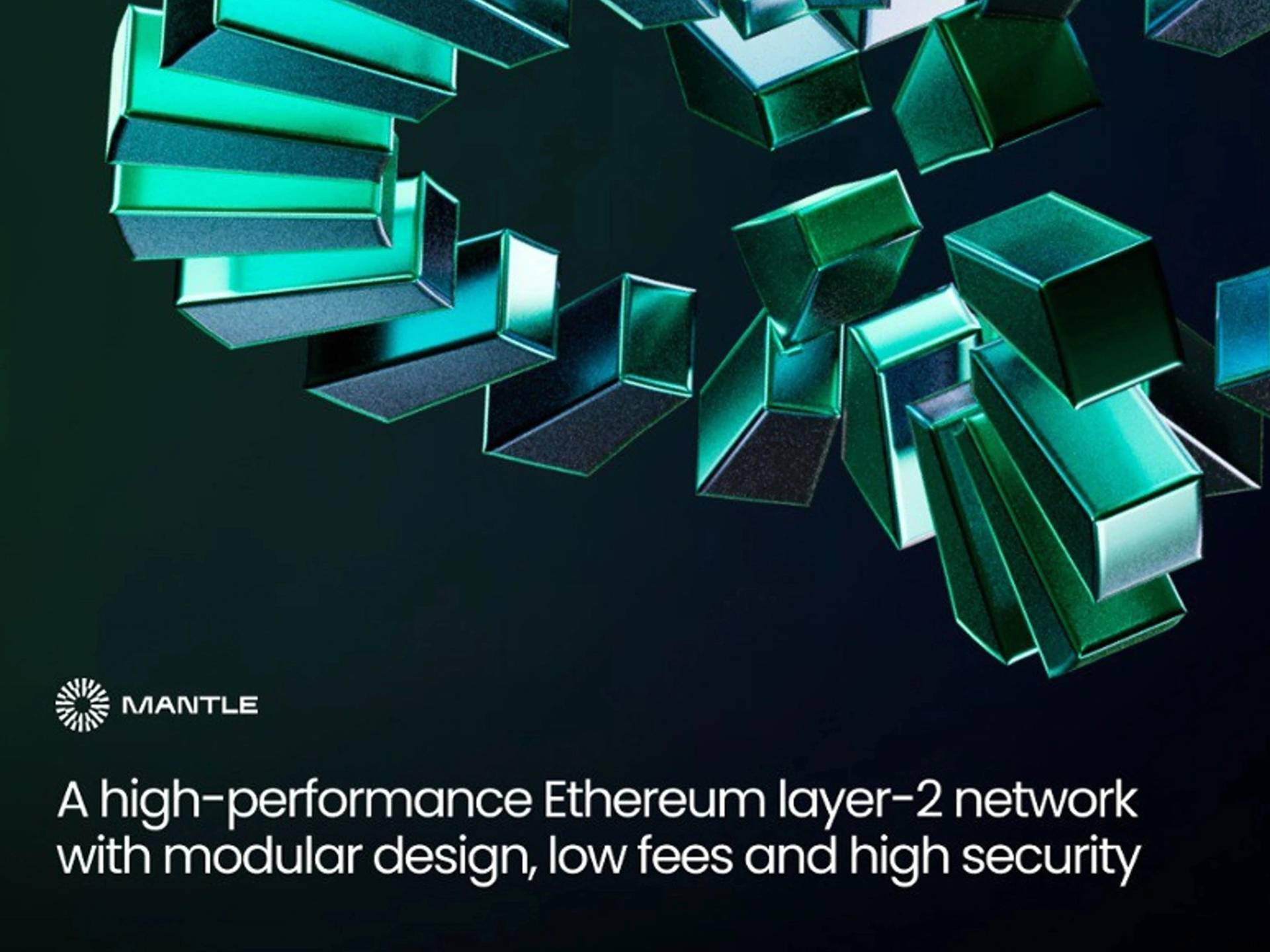위키 구독하기
Share wiki
Bookmark
Mantle Network
Mantle Network
Mantle Network는 이더리움 가상 머신(EVM)과 호환되는 2계층 확장 솔루션입니다. 빠르고 비용 효율적인 트랜잭션을 가능하게 하기 위해 낙관적 롤업을 사용합니다. Mantle Network는 트랜잭션을 오프체인에서 처리하고 온체인에서 정산함으로써 효율성을 보장하는 동시에 이더리움의 기능을 활용합니다. [1]
개요
Mantle Network는 Anon이 설립했습니다. Mantle Network는 이더리움(Ethereum) 생태계와 호환되는 확장 솔루션 개발에 중점을 두고 있으며, 최소한의 조정으로 기존 계약 및 도구와의 원활한 상호 운용성을 보장합니다. 모듈식 아키텍처를 활용하여 Mantle Network는 낙관적 롤업(optimistic rollup) 메커니즘과 혁신적인 데이터 가용성 솔루션을 통합하여 접근성과 경제성을 높이는 동시에 이더리움(Ethereum)의 보안 표준을 유지합니다. [1]
이 프로토콜 설계는 비용 절감 및 사용 편의성 향상, 개발자 개발 프로세스 간소화, 그리고 새로운 세대의 탈중앙화 애플리케이션(dApps)을 위한 강력한 인프라 제공을 통해 사용자 경험 향상에 중점을 둡니다. 롤업(rollup) 구조를 채택함으로써 Mantle Network는 이더리움(Ethereum)의 검증자(validators) 및 합의(consensus) 프로토콜을 활용하여 가스(gas) 수수료를 크게 줄이고, 트랜잭션 대기 시간을 단축하며 처리량을 늘립니다. 사용자는 트랜잭션 확인 요구 사항을 맞춤 설정하여 최적화된 보안 매개변수를 사용하여 거의 실시간 확인이 가능합니다. [1]
Mantle Network의 모듈식 아키텍처는 트랜잭션 실행, 합의(consensus), 결제 및 저장 기능을 체인 내의 개별 모듈로 분리합니다. 여기에는 트랜잭션 처리를 위한 EVM 호환 실행 계층, 이더리움(Ethereum) 플랫폼에서 실행되는 합의 및 결제 계층, 그리고 현재 EigenDA 기술을 기반으로 하는 Mantle DA인 외부 데이터 가용성 구성 요소가 포함됩니다. [1]
역사
2023년 7월에 시작된 Mantle 네트워크는 DAO가 출시한 최초의 Layer-2 솔루션이었습니다. 암호화폐 분야에서 상당한 자금을 보유한 것으로 알려진 BitDAO에서 시작된 이 네트워크는 2023년 5월 커뮤니티 투표를 거쳐 Mantle과 통합되었습니다. 이 합병으로 BitDAO는 Mantle로 리브랜딩되었으며, 2023년 6월부터 모든 BIT 토큰을 1:1 비율로 MNT 토큰으로 전환할 수 있게 되었습니다. [2]
Everest 업데이트
Mantle v2 Everest는 1년 이상 안정적으로 운영된 Mantle v2 Tectonic 이후 Mantle 네트워크의 중요한 업그레이드입니다. 이 업데이트는 네트워크의 인프라를 개선하고 이더리움의 향후 Pectra 업그레이드와 호환되도록 조정하여 기술적 호환성을 보장하고 향후 개발을 준비합니다.
업그레이드의 핵심 구성 요소는 EigenDA 통합입니다. 이전에 Mantle은 EigenDA 기술을 기반으로 구축된 Mantle DA(데이터 가용성 계층)에 의존했습니다. 이제 EigenDA가 출시됨에 따라 Mantle은 테스트넷과 메인넷 환경에서 완전히 전환되었습니다. 이 통합은 데이터 처리 및 네트워크 보안을 향상시킬 것으로 예상됩니다. 업그레이드에는 이더리움의 Pectra 업데이트에 대한 적응도 포함됩니다. Mantle은 이제 블록 헤더에 RequestsHash 필드를 추가하고 새로운 트랜잭션 유형인 SetCodeTx를 추가하는 것을 포함하여 EIP-7685 및 EIP-7702에서 도입된 변경 사항을 지원하여 이더리움 레이어 1 개발과의 일치를 보장합니다.
Everest 업그레이드에서 도입된 새로운 기능에는 RIP-7212 사전 컴파일된 계약 지원 및 op-geth 기능 확장이 포함됩니다. 이러한 변경 사항은 OP Stack Bedrock 프레임워크에 대한 지속적인 개발을 반영합니다. 이전에 가스 수수료 후원을 허용했던 MetaTX 기능은 제거되었습니다. 해당 기능은 더 광범위한 이더리움 업그레이드의 일부로 EIP-7702를 구현하여 대체되며, 업데이트된 이더리움 생태계와 Mantle의 접근 방식을 일치시킵니다. [20]
특징
모듈형 블록체인 롤업
Mantle 네트워크는 실행, 합의, 결제 및 데이터 가용성 기능에 대해 계층화된 접근 방식을 구현하여 서로 다른 네트워크 참여자가 특수화된 계층을 관리할 수 있도록 합니다. 이러한 아키텍처 설계를 통해 Mantle 네트워크는 가스 비용을 상당히 절감하고 전반적인 성능을 향상시킬 수 있습니다. [3]
모듈형 롤업 모델을 채택한 Mantle 네트워크는 기본적인 블록체인 작업을 최적화하여 블록체인 커뮤니티의 중요한 과제인 확장성, 보안 및 분산화 트릴레마를 해결합니다. [3]
자원 분리를 통해 특정 작업을 각 계층에 할당하여 네트워크 효율성을 높이고, 모든 사용자가 향상된 보안의 이점을 누릴 수 있도록 합니다. 이는 레이어 1(L1)에서 전체 노드 검증자에만 의존하는 것과는 다릅니다. 별도의 계층에서 작동하면 노드의 실행 및 검증 부담이 줄어듭니다. 사기 증명 및 ZK 증명과 같은 기술을 통해 유효성 검사를 위해 모든 트랜잭션을 실행할 필요가 없기 때문입니다. [3]
데이터 가용성
Mantle Network는 롤업 아키텍처에 내재된 보안 문제를 EigenLayer(아이겐레이어)라는 재스테이킹 프로토콜을 활용하여 해결합니다. EigenLayer(아이겐레이어)는 이더리움(이더리움)의 신뢰할 수 있는 네트워크를 활용하여 레이어-2 솔루션의 데이터 가용성을 보장하는 동시에 이더리움(이더리움) 메인넷과 유사한 보안 수준을 유지합니다. EigenLayer(아이겐레이어)의 데이터 가용성 솔루션인 EigenDA를 통해 Mantle Network는 노드가 데이터 가용성 서비스를 제공할 수 있도록 합니다. 검증자들은 $MNT 토큰을 스테이킹하여 Mantle Network의 경제 모델에 참여함으로써 추가적인 수익을 얻을 수 있습니다. 이러한 참여는 Mantle Network 실행 계층 내에서 블록 데이터의 완전성과 정확성을 향상시킵니다. [3]
EigenDA는 데이터 가용성을 합의 계층과 분리하고, 네트워크 참여자 간의 효율적인 데이터 저장 및 전송을 위한 유니캐스트 채널을 구현합니다. 또한, 지우기율을 유지하여 레이어-2 및 레이어-1 소스의 데이터 조각을 통해 완전한 블록 데이터 재구성을 가능하게 합니다. 이 솔루션은 거버넌스 기능을 넘어 $MNT의 유틸리티를 향상시키는 동시에 차세대 Web3 애플리케이션에 필요한 높은 처리량을 제공합니다. [3]
사기 증명
롤업에서 채택하는 낙관적인 모델에서는 네트워크 참여자의 선의를 가정하므로, 네트워크 무결성을 강화하기 위해 강력한 사기 증명 구현이 필요합니다. 그러나 사기 증명을 구현하는 것은 어려움을 줍니다. [3]
현재 온체인 검증자는 하위 수준의 가상 머신에서만 명령어를 실행할 수 있으므로, 사기 증명을 EVM 클라이언트가 이 언어로 변환해야 합니다. 결과적으로 사기 증명의 내용은 준수하는 EVM 클라이언트에서 직접 얻어지지 않는 경우가 많으며, 온체인 검증자가 사기 증명 생성자를 볼 수 없으므로 그 출처를 확인할 방법이 없습니다. 이는 이더리움 클라이언트에 내장된 신뢰 최소화를 저해합니다. [3]
Mantle Network는 EVM 명령어를 사용하여 사기 증명을 직접 컴파일하고 검증하는 방식을 채택하여 이 문제를 해결합니다. 이를 통해 모든 이더리움 클라이언트가 공유 증명 시스템과 상호 작용할 수 있으므로, 검증자, 컴파일러 및 클라이언트 간의 신뢰 가정을 줄일 수 있습니다. [3]
트랜잭션 라이프사이클
Mantle 네트워크 내의 트랜잭션은 지갑 사용자, dApp 또는 스크립트에 의해 시작될 때 시작됩니다. Mantle SDK와 같은 도구는 시퀀서 처리를 위한 요청 생성, 서명 및 제출을 용이하게 합니다. 검증 후 트랜잭션은 보류 중인 블록에 추가되며, 배치 처리를 활용하여 고정 비용을 분산하고 트랜잭션 수수료를 최소화합니다. [3]
이후, 임계값 서명 방식 노드는 시퀀서를 통해 Ethereum 네트워크로 전송하기 전에 블록 데이터를 검증합니다. Rollup 검증자는 사용자와 dApps이 액세스할 수 있도록 Mantle 네트워크 내에서 데이터를 동기화하는 반면, Ethereum은 해당 합의 메커니즘을 통해 전송된 데이터를 온체인에 기록합니다. 또한, 데이터 가용성 노드는 Mantle 네트워크 내에서 데이터 액세스를 동기화하고 보장하며, 보상으로 $MNT 토큰을 받습니다. [3]
MNT
$MNT 토큰은 맨틀 생태계 내에서 거버넌스 토큰(governance tokens) 및 유틸리티 토큰(utility tokens)의 이중 역할을 수행합니다. 거버넌스 측면에서 각 $MNT 토큰은 동등한 투표권을 가지며, 토큰 보유자는 DAO 의사결정 과정에 참여할 수 있습니다. 유틸리티 토큰(utility token)으로서 $MNT는 맨틀 네트워크의 가스 수수료를 지불하는 데 사용되며, 맨틀 네트워크 노드의 담보로도 사용될 수 있습니다. 네이티브 토큰으로서 $MNT는 다른 Layer-2 블록체인 토큰과 유사한 기능을 공유합니다. [3]
토큰 경제학
Mantle (MNT) 토큰의 초기 분배는 다음과 같습니다. [4]
- 49.00%는 재무부에 할당됨
- 51.00%는 유통에 할당됨

Citizens of Mantle
Citizens of Mantle은 비주얼 아티스트 Chen Man(천 만)과 함께 제작된 최초의 네이티브 모듈식 NFT 컬렉션입니다. 이 아바타 컬렉션은 활동적인 커뮤니티 회원들에게 보상을 제공하고자 합니다. Mantle Journey 프로그램과 연동되어 Mantle 커뮤니티 참여에 대한 추가 인센티브를 제공합니다. 사용자는 지갑을 연결하여 자격을 확인하고 화이트리스트에 참여할 수 있습니다. [5]
Mantle 시민이 되면 Mantle 생태계 내에서 몰입형 경험에 접근할 수 있습니다. Citizens of Mantle NFT 아바타는 Mantle 네트워크 내에서 구축, 연결, 플레이, 수익 창출 및 거래 여정의 충실한 동반자입니다. 사용자가 Mantle 생태계 내에서 이정표를 달성함에 따라 NFT 아바타는 다양한 특성을 얻으며 진화합니다. 이러한 아바타는 Mantle 생태계 내 참여 및 성과를 반영하며, 참여자가 발전함에 따라 미래의 혜택과 기회를 제공합니다. [5]

mETH Protocol
mETH Protocol은 Ethereum L1에 배포된 비허가형(permissionless)이자 비보관형(non-custodial) ETH 유동적 스테이킹 프로토콜이며, Mantle에 의해 관리됩니다. 간단하고 현대적인 디자인과 강력한 위험 관리 기능을 갖추고 있으며, Mantle 생태계 리소스를 활용하여 보상적인 경험을 제공하고 Mantle의 수익률을 높입니다. Mantle Staked Ether ($mETH)는 mETH Protocol 내에서 가치가 축적되는 수령 토큰으로, 스테이커의 ETH 예치를 모으는 역할을 합니다. 스테이커는 스테이킹된 원금과 누적된 보상에 대한 청구권을 나타내는 $mETH 토큰을 받게 되며, 이 토큰은 다른 애플리케이션에서 사용할 수 있습니다. 언스테이킹 시, 스테이커는 스테이킹된 ETH와 스테이킹 기간 동안 얻은 모든 보상(발행, 우선 수수료, 최대 추출 가능 가치(MEV) 포함)을 받게 되며, 이는 스테이커, LSP 및 노드 운영자에게 분배됩니다. [6]
멘틀 인덱스 포(MI4)
멘틀 인덱스 포(MI4)는 탈중앙화 수익 전략을 통합하면서 주요 디지털 자산에 대한 규제된 노출을 제공하는 펀드입니다. 기존 및 암호화폐-네이티브 투자자들이 직접 보관이나 수동 포트폴리오 관리 없이 암호화폐 시장에 대한 간편한 접근을 원할 때 사용됩니다.
이 펀드는 BVI 유한책임파트너십으로 구성되며 멘틀 가드 리미티드(Mantle Guard Limited)가 관리합니다. BTC, ETH, SOL 및 USD 기반 스테이블 자산으로 구성된 큐레이션된 포트폴리오를 제공하며, 시가총액 및 위험 지표를 기반으로 분기별로 자산 배분을 조정합니다. 이 전략에는 스테이킹 구성 요소(예: mETH, bbSOL, sUSDe)가 포함되어 DeFi 메커니즘을 통해 수익률을 높이는 동시에 규정 준수 표준을 준수합니다.
DAO 승인 후, 멘틀 트레저리는 MI4에 초기 투자금으로 최대 4억 달러를 투입했습니다. 이 펀드는 Securitize의 토큰화 서비스를 사용하여 멘틀 네트워크에서 투자 지분을 발행합니다.
운영 인프라에는 Fireblocks 및 다중 서명 지갑과 같은 기관급 도구가 포함되며, 보안 강화를 위해 추가 보관 솔루션을 고려하고 있습니다. MI4는 통합 수익 기능을 갖춘 암호화폐 베타 노출의 기준점으로, 기존 금융 구조와 탈중앙화 금융 프로토콜을 연결하는 것을 목표로 합니다. [21] [22]
파트너십
잘못된 내용이 있나요?
